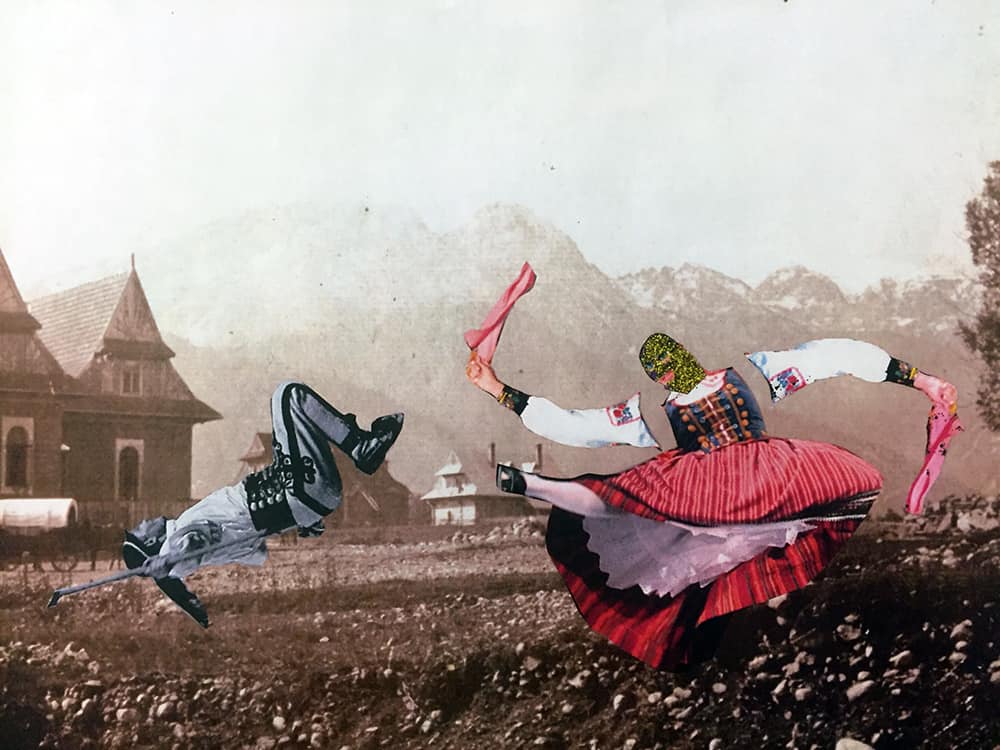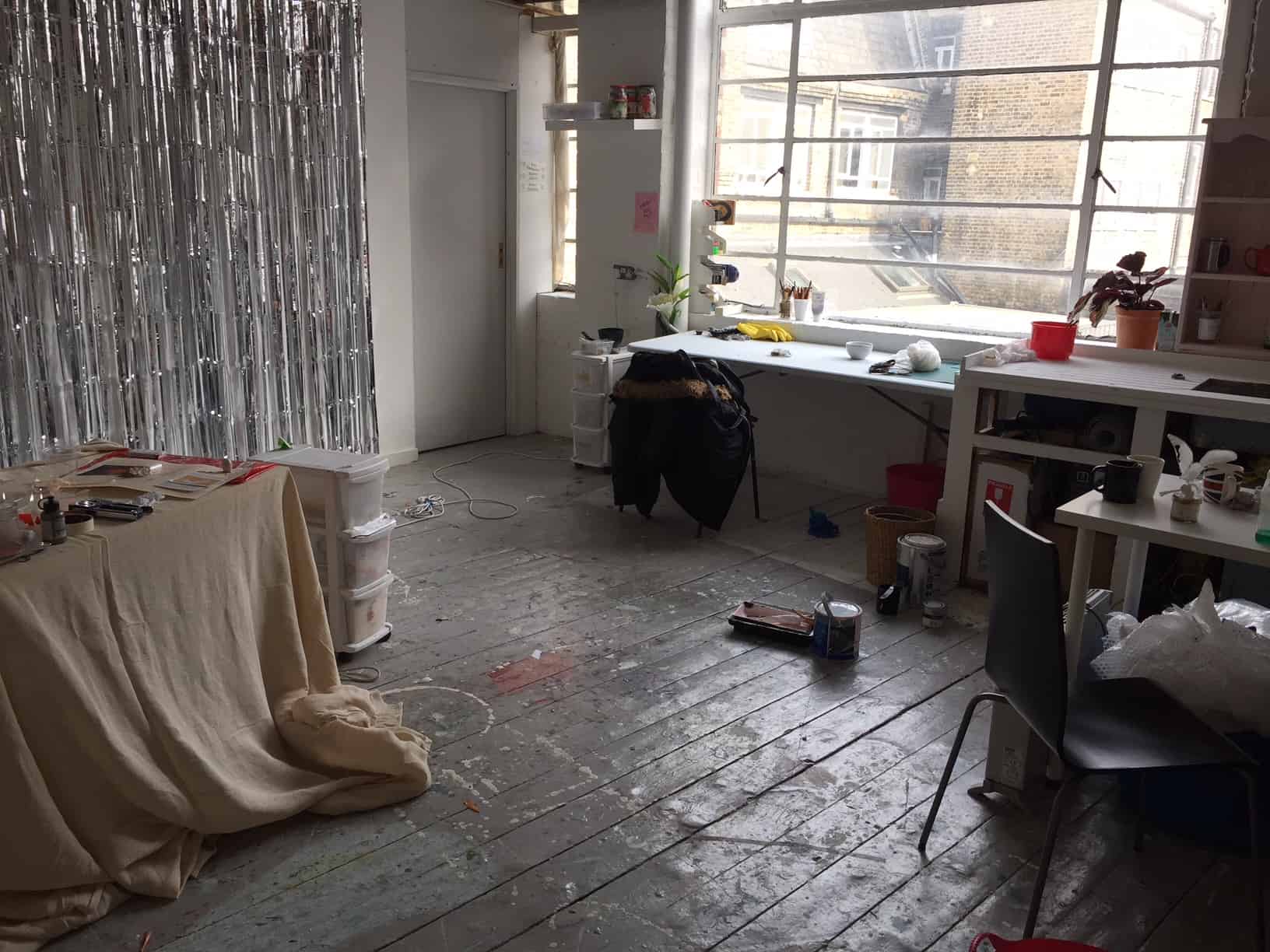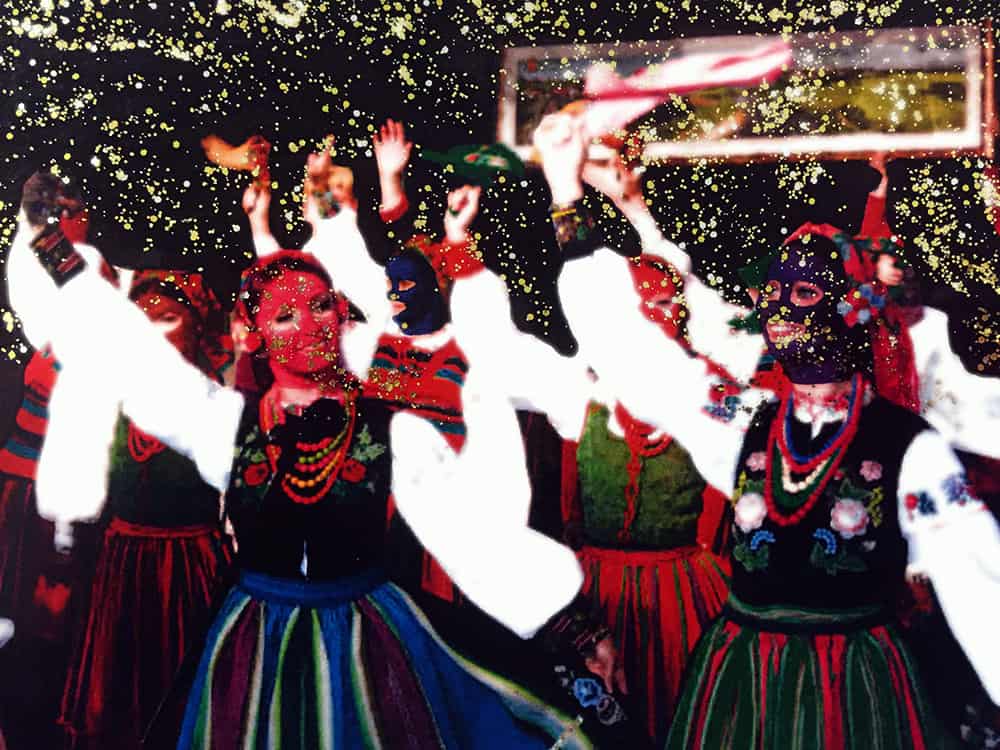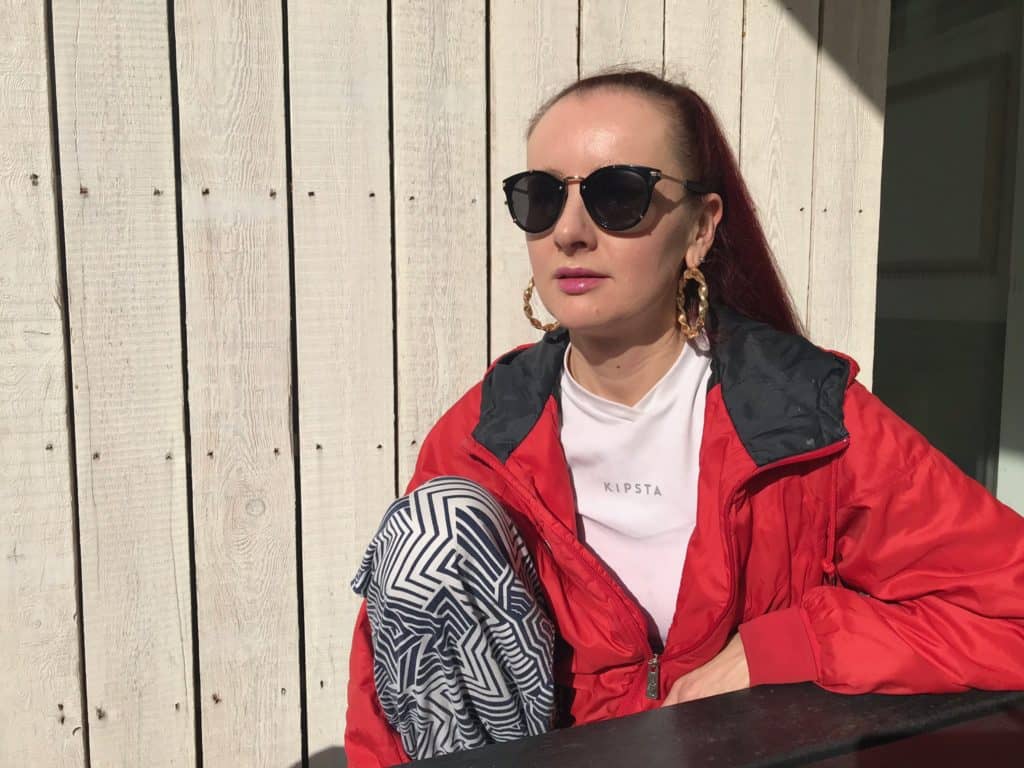Roma Piotrowska: Could you tell me a bit about your background as an artist?
Katarzyna Perlak: I studied philosophy, as well arts and crafts in Poland. I also started studying photography at the Academy of Fine Arts in Poznań, but after one term I went for a gap year to London and quickly decided to stay for much longer.
RP: How quickly did you decide to stay?
KP: It took me one day to decide! It was 13 years ago. I had found out that I could study here, so instead of returning to Poznań, I did a BA in Photography at Camberwell College of Arts, and I recently finished my MA at The Slade, in Fine Art Media. I started working with installation, sculpture, sound and performance there; it was really an amazing experience to explore other media.
RP: How would you describe your life in London?
KP: I love London, but in some ways it’s also a challenging city, in terms of cost of living etc. Being (predominantly) a media artist, I don’t profit from sales that often so I also work as a commercial photographer and filmmaker to support my practice. I also work in a cinema a couple of shifts per week. It’s a flexible job that allows me to travel a lot and go for residencies. I have many friends in London, and people that I consider my family. I’ve met so many amazing artists and people from all around the world. I love having the opportunity to see all the art here. I also appreciate the freedom of expression that is available to members of the LGBT and Queer communities.
RP: We are in your studio now. Could you tell me a little bit about this place? Is it a kind of place where many artists have studios?
KP: Yes, it’s called Bow Arts Studios. They[1] have a number of different sites, mostly around East London. It’s a charity that supports artist by making studios more affordable, well kind of – it is still quite expensive. I live around the corner so it’s convenient for me.
RP: Do you spend a lot of time in the studio?
KP: After my graduation in September, I went for a residency in Poland and just recently came back …and moved to this new studio, so it’s all still quite fresh! Winter has been super cold in here but as spring is starting soon I am going to be here much more. I work a lot with video so I am editing at home as well.
RP: Could you tell me what does your typical day look like?
KP: My day? You know… It varies, but usually I start it off with going to the gym, then I come here, do some research, make things – depends what I am working on. This week I will be working on my prints, and also I’m going to paint this studio and get some plants to make it more cosy. A good thing about being an artist is that you don’t have a routine, and every week is different. I collaborate with other artists a lot, so this week for example I’m going to take photographs and film with Project O and Rebecca Bellantoni, my long-term collaborators.
RP: Do you keep in touch with other Polish artists living in London? Or in the UK?
KP: Yes, with quite a few. Two of my very good friends Agnieszka Szczotka and Maja Ngom are Polish artists based in London. There are a lot of Polish people here, so it is quite easy to meet them. I met even more through ‘Eastern European Dinners’ that I initiated. I had this idea to create a social space for people to meet, and start doing things together. I am also in touch with a few artists from Romania, Latvia and the Czech Republic.
RP: Which part of the London art world do you belong to?
KP: Because my work is quite politically engaged and I work with queer subjects, I know quite a lot of people who are engaged in and work with similar themes. I also know a lot of artists who are first and second generation migrants.

Katarzyna Perlak, ‘Niolam Ja Se Kochaneczke’ (2016)
RP: What galleries do you usually visit?
KP: I like going to South London Gallery, INIVA, 198, Showroom, Delfina Foundation, Studio Voltaire, Tenderpixel, and Calvert 22 – just to mention a few.
RP: You are currently showing your video ‘Niolam Ja Se Kochaneczke’ (‘I Once Had a Lover’) (2016) at New Contemporaries, one of the most prestigious exhibitions for emerging artists in the UK. Could you tell me a little bit more about the work?
KP: In summary, the video queers[2] Eastern European folk songs, love songs to be precise. I worked with two groups of folk singers. Three of them were from Lublin in south east Poland, and the other group was from a village called Wola Sękowa, which is where we filmed the video. I wanted to present Polish Eastern Borderlands’ narration and introduce a more fluid idea of national identity. One of the singers is a Polish POC[3]. I also brought a French Algerian singer from London.
RP: And for me as a Polish speaker, it’s weird because the language they use seems kind of Polish but I don’t really understand it …
KP: The first song is in Polish and it is sung by Polish women. The second song is in the Lemko language. The Lemkos’ homeland lies in a area of the Carpathian Mountains currently belonging to three different countries: Poland, Ukraine and Slovakia, an area where the borders moved many times.
RP: This work is focusing on national identity, but is also about being queer. The singers, are all female, and they are singing about loving another woman …
KP: Folk songs are mostly sung by women so I didn’t have to impose that (onto the singers). I subverted the narrative of the song, because originally it was a song about a girl and a boy. I removed the guy from the song and brought another girl in instead by changing the endings of some of the Polish words. The Polish language is gendered, so everything is either female, male, or neuter.
RP: Where did the motivation for the video come from?
KP: On one hand, I was looking at the lack of representation of queer narratives or same sex love in Eastern European folk tradition, particularly in love songs. I was also interested in investigating the way in which historical narratives are constructed and linked to Eastern European identity. On one hand I want to make a ‘space’ in the history for these lost, redacted stories, and question why they’ve been erased from the record. On the other hand, I was looking at how history is constructed and how tradition is represented. I intended to encourage the viewer to consider and experience history as a discourse made out of multiple, overlapping and contesting narratives rather than a single, fixed entity. Right wing, nationalistic ideologies that are currently on the rise around the globe often use historical heritage to back up their ideologies, so the idea was to challenge this and complicate their version of history.
RP: You worked with some singers who are actually from that part of Poland. How did they react to your ideas? Did they support it?
KP: They all supported me, but the girls from Lublin were concern about people knowing that they had taken part in the project. Some of them were clear that for them it was just a job. The second group supported the idea from their hearts. They really loved taking part in the project and there was less secrecy about it.
RP: How do you think queerness is treated in Poland?
KP: Queerness is commonly portrayed in Eastern Europe as something that does not belong there. Instead, it is portrayed as a contemporary phenomenon that’s creeping in from a “deviant” Western Europe. For that reason I think, it is erased/suppressed from any tradition or historical heritage, and definitely separated from the Eastern European identity.
RP: Are you planning to explore these subjects further?
KP: I’m working on a series of collages that deconstruct and reconstruct the representation of folklore. I’ve been doing some raiso prints and I’m planning to make a short animation, but I definitely don’t want my practice to be all about folklore and queer. I feel I need to explore this subject as much as I can and then see what next. You can never quite predict where your art practice will take you. At the moment I am also working around the image of the horizon and its correlations with affectual notions of utopia.
RP: Do you feel the impact of growing nationalism and right-wing views in Poland? How does it affect you?
KP: The most recent ch
anges in Poland are quite worrying. There is definitely governmental approval (or even encouragement) of nationalistic, anti-feminist and anti-queer agendas. In Poland you don’t have a Ministry of Culture, but a Ministry of Culture and National Heritage. When you make a ‘historical’ artwork you apparently get extra points in your ‘arts council’ application. The government emphasises history and national identity, and they have this very particular idea of what the national identity should be. I am trying to challenge that in my art and demonstrate that no-one owns history.
RP: Do you think you could work in Poland as an artist?
KP: I have recently been in Wroclaw on a residency organised by Arts Territory, which is a UK based organisation run by Katarzyna Sobucka. I worked at BWA[4] Wrocław’s studio gallery and they were really supportive. There was not one occasion that anyone told me that what I was doing was too controversial etc., which was great and very supportive. It was my first experience of working in Poland.
RP: Could you tell me a little bit more about the work “A Polish Wedding without Censorship”, which you made during that residency?
KP: Originally, I was planning to work further on queering[5] folk, but on my first day I was inspired by two swan boats I saw on one of the canals. This is when I had the idea of having two brides on these boats on a cruise around Wrocław. When people get married, they go around town to have theirs photographs taken. It’s like this extra way of performing heteronormativity[6] and the institution of marriage. Same sex couple marriage is still illegal in Poland, so I created a fictional lesbian wedding. I worked with two actresses – Barbara Piwoń and Karolina Micuła.
RP: But why a Polish wedding?
KP: I was looking again at queering something that is linked to traditional Polish values. I wanted to question what a Polish wedding is. As one of the strategies, I came back to love songs, but this time a disco polo wedding song. Disco polo is a genre of popular (let’s say quite cheesy) dance music, created in Poland in the late 1980s, that originated from wedding songs, considered to be contemporary urban folk. In the first part of the video the couple is singing the song with a horizon behind them. Then there is the first dance filmed in a gay and lesbian club in Wrocław. For the second part we went to very typical locations for a wedding photoshoot in Wrocław. We also went to more random places, like the market and we were commuting by tram…
RP: Two brides in white dresses?
KP: Yes, with masks on. People were curious and staring but no one said anything or did anything violent. But it was obvious that it was sort of an art project because of the camera crew and the masks … The final part of the project was the actual wedding at the BWA Gallery. I was trying to follow all the traditional requirements of the Polish wedding, while somehow subverting them. For example, I invited three drag queens to perform; They welcomed the brides with traditional salt, bread and vodka, gave speech at the dinner table and performed later. 30 people were invited for a dinner, and after that we had a public reception. A wedding host (wodzirej) – Jakub Jankowiak – who does this kind of thing professionally, was in charge of entertainment. He knows everything about traditional Polish weddings and was just amazing, queering it all and making it very political. We couldn’t have done it without him.
RP: So you could say it was the first lesbian wedding in Poland?
KP: Yes, in our short lived utopian moment, it felt like it was.
RP: And why did you decide to have masks on?
KP: I like using masks in my work and in this case the masks made the brides more universal. They were personifications of an idea, and not individual people.
RP: You have recently showed your work ‘Vulnerable’ as a durational performance at the closing week of Venice Biennale, in the Diaspora Pavilion. Could you tell me about that work?
KP: It was a great context to be placed in. I felt very honoured to be presenting with all these amazing artists that were exhibiting there. This work is a sound piece originally presented as an installation: A collection of 142 exchanges with participants who tell me how to pronounce ‘vulnerable’ properly. In the beginning, I was only asking English native speakers, but after a while I’ve changed it and started asking anyone.
RP: It’s so interesting to listen to those people speaking, because even native speakers were pronouncing it differently because it’s a very difficult word to pronounce.
KP: That’s what I like about it – it breaks the usual power dynamic of language. Almost everyone was getting really self-conscious and confused about how to say it.
RP: The meaning of the word is important. It is interesting how accents determine how we are perceived by other people…
KP: Yes, the work reflects upon the relationship between language, power structures, social mobility and vulnerability. I was thinking how accent affects your social and economic mobility, and also how it can make you vulnerable. Of course, all of the accents have different weigh. It’s very different if you speak, for example, with a French accent or an Eastern European accent. The whole expat vs migrant thing. However, what can’t be forgotten – outside of the language power dynamics – is that despite various disadvantages, most Eastern European migrants still benefit from a white privilege. Accent will never make you vulnerable in the same way as a body or skin tone that is being racialized[7]. It is something that I didn’t want to overlook in that work. Other than that, there is also the class related accent situation in the UK too, which I was trying to address. Being Northerner or / and working class in the UK affects the way you are being read or misread. As for myself I have quite noticeably a Polish accent, which in some contexts I can feel quite self-conscious about, but I have no shame about being Polish or Eastern European; I’m just aware that it affects how I’m being perceived.
[1] The Bow Arts Trust
[2] ‘Queers’, ~ adj, as in, to make something reflect the queer experience and point-of-view.
[3] POC – Person of Colour
[4] BWA Wroclaw Galleries of Contemporary Art
[5] Queering – to reevaluate or reinterpret a work with an eye to sexual orientation and/or to gender, by applying interpretive techniques from queer theory. Wikipedia.org
[6] Heteronormativity – the belief that people fall into distinct and complementary genders (male and female) with natural roles in life. It assumes that heterosexuality is the only sexual orientation or only norm, and that sexual and marital relations are most (or only) fitting between people of opposite sexes. Wikipedia.org
[7] Racialized – racialization or ethnicization is the process of ascribing ethnic or racial identities to a relationship, social practice, or group that did not identify itself as such. Wikipedia.org
‘Studio Visit’ is a series of interviews conducted by Roma Piotrowska with most interesting Polish artists living in the UK. They discuss their artistic approaches through the prism of the everyday life and recent socio-economic transformations in Britain and Poland. Many of these artists left for the UK shortly after Poland joined the EU in 2004. Thousands of young people, including many artists, found their new home here, studied and matured artistically. In 2019 the UK will step out of the EU, so the present moment seems to be just right to describe a completely new generation of Polish artists. Conversations take place in artists’ studios or houses.


















